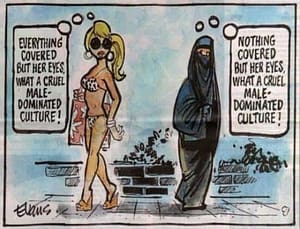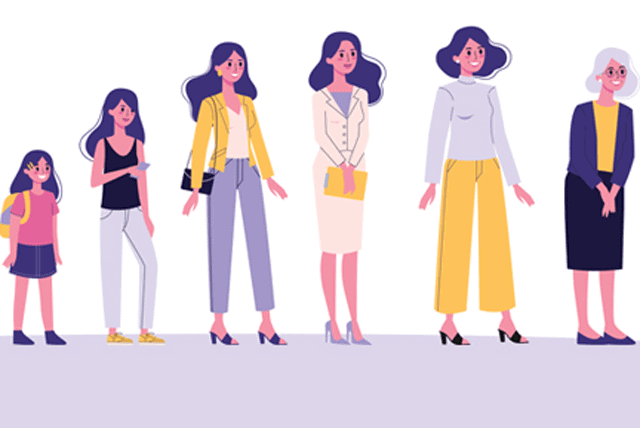Think you’re immune to stereotyping the people in your community? That you never notice a person’s skin color, what they’re wearing, what their gender is?
Then look at this cartoon and think about your reaction:

It comes via the article “The Bubbles Inside Our Heads,” by Marilyn Gardner, educator, nurse, trainer, thinker, “third-culture kid” (and sometimes Talance collaborator) who writes about culture and sometimes health care on her blog Communicating Across Boundaries.
It’s a great article that examines what happens when we get caught up by our stereotypes, particularly those about muslims, and how that affects our work in neighborhoods, workplaces, and health centers.
To get a sense of the article and how these thoughts can be bad for community health, here are some excerpts from Marilyn, originally published on her blog:
“The problem with stereotypes is not that they are incorrect; it’s that they are incomplete.”
The cartoon characters have formed opinions based on stereotypes. Neither of them are capable of complexity, of seeing beyond the surface and trying to understand each other. It’s an excellent cartoon showing the great divide between cultures and the danger of stereotyping.
I call this picture “The Great Divide.” There is this chasm separating these two that has far more to do with the bubbles inside their heads than reality. Indeed, research tells us that if they did get to know each other, they may find they may have much in common.
…
If we are honest with ourselves, we will recognize that much of the time we are like this cartoon. We live according to the bubbles inside our heads. None of us are immune. We form opinions and assumptions based on our cultural values, our religious views, our socioeconomic status, the media we listen to, watch or read, our countries of origin, the countries that adopted us, the families in which we were raised, and the list could go on.
Bubbles aren’t inherently bad — often they help us to make good choices; but other times they prevent us from seeing people as they really are. They float down through our brains and cloud our vision.
My African American friends often fall victim to head bubbles. At one time, the director of my program was an African American woman raised in Ohio and transplanted to the East Coast. She was amazing and had degrees after her name that I could only dream about. But no matter where it was, when she walked into a new doctor’s office or clinic, immediately the person behind the desk asked for her Medicaid card. The bubbles above their heads told them that she was black, so she was poor. She was black, so she must have public assistance in everything from food to insurance.
…
The challenge is to be aware of them, to recognize them for what they are: stereotypes and biases that are rooted in our subconscious, and must be recognized and confronted.
Originally published July 06, 2016, updated October 23, 2020.



